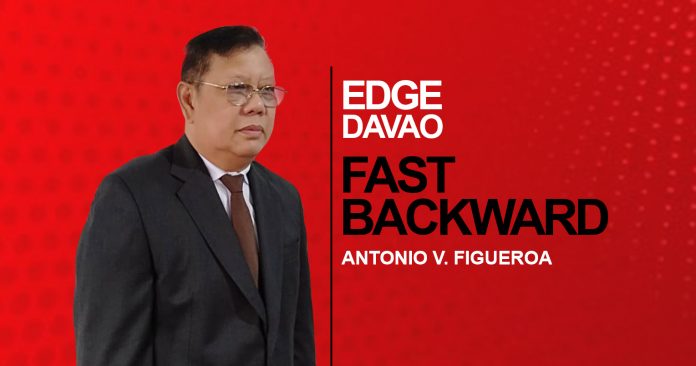Although most researchers agree Datu Bago, Davao’s former chieftain, holds a Maguindanao-Tausug lineage, there are breakaways that hold the position he is of Bagobo ancestry.
The first to zealously adopt this hypothesis was former Davao city mayor Elias B. Lopez, a pure-blooded Bagobo who established in 1969 the coveted Datu Bago Awards, which is bestowed on the city’s most illustrious sons and daughters.
But the conundrum remains: Was he really a Bagobo?
Early proponents embraced the Bagobo tradition based on a plain-view reading on the possible provenance of the Davao hero’s most accepted appellation as Datu Bago. In Bagobo, as well as in Maguindanao, ‘datu,’ a Malay-inspired term, is deemed an indigenous title while ‘bago’ (as in ‘Bago Oshiro’) has the same meaning in other ethnic dialects.
Datu Bago’s affiliation with the Bagobo, though, is not buttressed by extant accounts. Except for some holdouts who still adhere to the tradition, the historical narratives are stacked in the Moro chief’s favor; these are well founded even in the presence of his still-contested ancestry.
Jesuit chronicles and American accounts firmly situate the datu’s link to the Moros. When he escaped the Spanish-led invasion in 1848, he initially sought refuge in the neighborhoods of Tigatto, Mandug, and Lapanday, mainly Muslim enclaves. In the end, he repaired to Bincungan, in Tagum City, where the Islamized Kalagan, the tribe of his second wife, was rooted.
When news of the Oyanguren conquest reached the south, the residents of Darong and Inawayan, now barangays of Santa Cruz, Davao del Sur, promptly planned to trap the intruders but they were no match to the superiorly equipped invaders. Like the Bincungan cohorts, the villagers of the two settlements were characterized in Spanish accounts as Moros.
As an assertion, only the Moros from Islamized villages around the gulf tried sending reinforcements to save the beleaguered datu from apparent humiliation. Against a well-equipped enemy, they were no match, though.
Arguably, Datu Bago was the ruler of the channel (i.e., Davao River) that links the gulf to the inner waterways where the Bagobos had built settlements. For decades, he ruled but was at odds with the natives who accused his men of pillaging and stealing their farm produce. At the time, the datu’s neighbors in the bay were small enclaves ruled by fiefs who were also Islamized.
Affirming this hiatus was the absence of any form of barter trade between the Bagobos and the Moros in extant chronicles. The animosity between the Moros of the gulf and the natives is palpable in numerous missionary accounts.
Datu Bago’s Moro heritage is best explained by the claim he was involved in piracy. Among the ethnic tribes, piracy was never part of their tradition simply because the coastlines belonged to the Moros and only the Moros were involved in raiding the littoral communities and riverway settlements. While the indigenous peoples also fished in municipal waters though rarely, they preferred catching fish in safer watercourses adjacent to their riverbank villages.
Another exciting aspect that strongly places Datu Bago’s Moro tradition accurately is religious association. The natives, as was the practice since precolonial times, were largely animists; on the other hand, the Moros, as believers of Islam, adhere to a kind of monotheistic belief.
Given these conditions, the Datu Bago Awards is actually an oddity of sort. The prize carries the name of a Moro hero while the advocate was a Bagobo. This peculiarity notwithstanding, the establishment of the award and the eventual declaration of Datu Bago as a legislated hero affirms the indelible significance of the Moro contribution to the history of the region.




